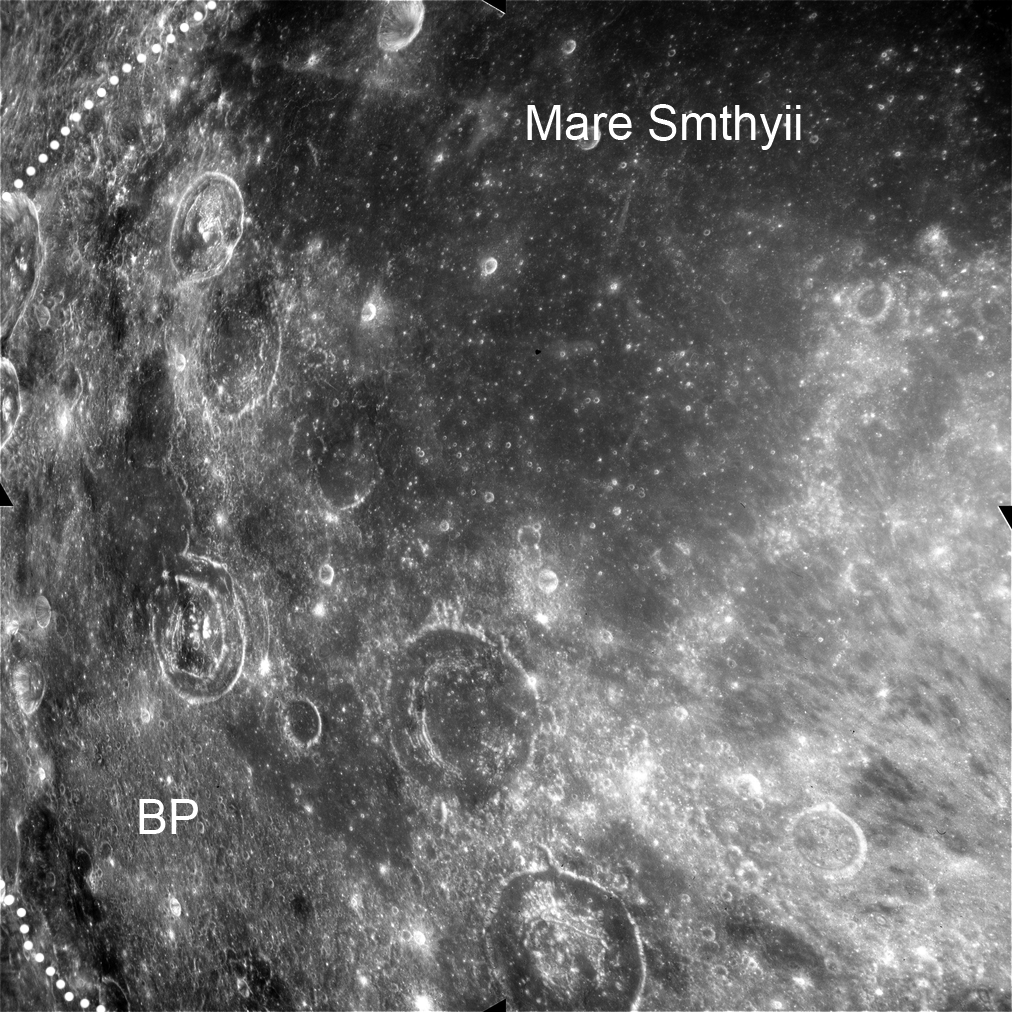
| Project Home | About the Scans | Browse Gallery | Image Map | Support Data | Resources | Ephemeris |
Featured Image - 02/05/2008
Smythii Basin
Apollo 15 metric frame AS15-M-0792 is an oblique view showing a portion of the Smythii Basin (740 km in diameter) which formed during the lunar Pre-Nectarian epoch about 4 billion years ago. The northeast region of Smythii Basin contains Mare Smythii, a deposit of high-iron, low-titanium, aluminous basalt that is approximately 1-2 billion years old, making it one of the youngest mare basalt deposits on the Moon. The southwest region of Smythii Basin contains a unit of dark basin plains (unit "BP" in Figure 1, below). These basin plains are older Upper Imbrian-aged mare basalts mixed with ejecta from more recent nearby highlands craters. The bright filamentous material in the lower right is ejecta from the Copernican-aged (<1 billion years old) crater Li Po, which is just outside of the field of view to the east. This metric frame was acquired with the Sun high above the horizon, so albedo differences are more apparent than topography. For example, large craters on the floor appear more like bright circles rather than deep depressions. Smythii Basin itself is named after William Henry Smyth (1788-1865), a British astronomer who created an early comprehensive star catalog.
Figure 1. Oblique view showing Smythii Basin. The approximate edge of the basin has been highlighted with a white dotted line. Mare Smythii is visible in the northeast part of the basin; the basin plains unit is marked on this image with "BP". The width of the whole frame is approximately 220 km (Apollo Metric Frame AS15-M-0792 [NASA/JSC/Arizona State University]).
References: J. J. Gillis and P. D. Spudis (2000), "Geology of the Smythii and Marginis region of the Moon: Using Integrated Remotely Sensed Data," Journal of Geophysical Research, 105, E2, 4217-4233.
Tweet
|
|
Space Exploration Resources |
|
 LPI LPI
|
